Picture a mixture of two types of noodles, stir-fried in broth with a plethora of ingredients. Sounds familiar? Yep, that’s one of our local favourites, Hokkien mee. There are many variations when it comes to such old school delights.
Everyone has their own preference with regards to whether they like it wet or dry and how intense its flavour is. This may be controversial, but I’m not a fan of Hokkien mee. However, Changi Village Fried Hokkien Mee at Toa Payoh Lorong 8 changed that.
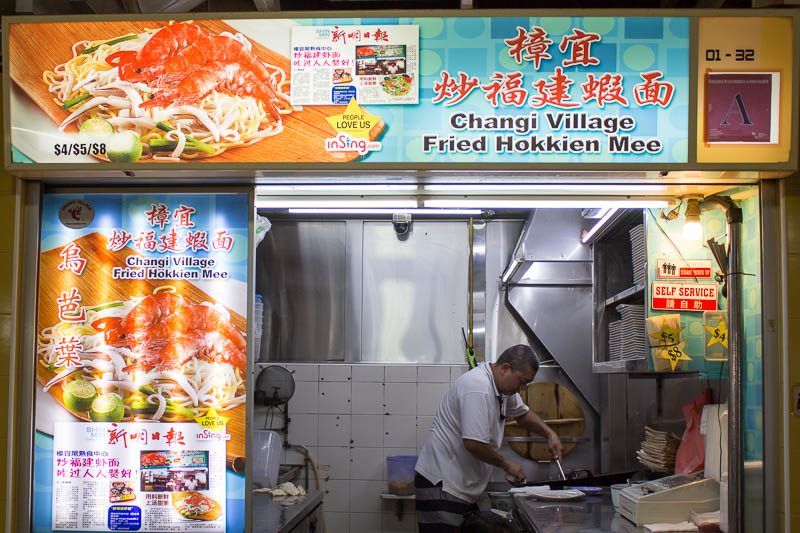
Located in the middle of the many stalls at Toa Payoh Lorong 8 Market & Food Centre, the stall doesn’t really stand out. Just a simple blue signboard with a review from a newspaper article as a testimonial of their good grub.
It’s a one-man show there, with only a single man in charge of all the cooking. However, his wife and his son do come to help out often.
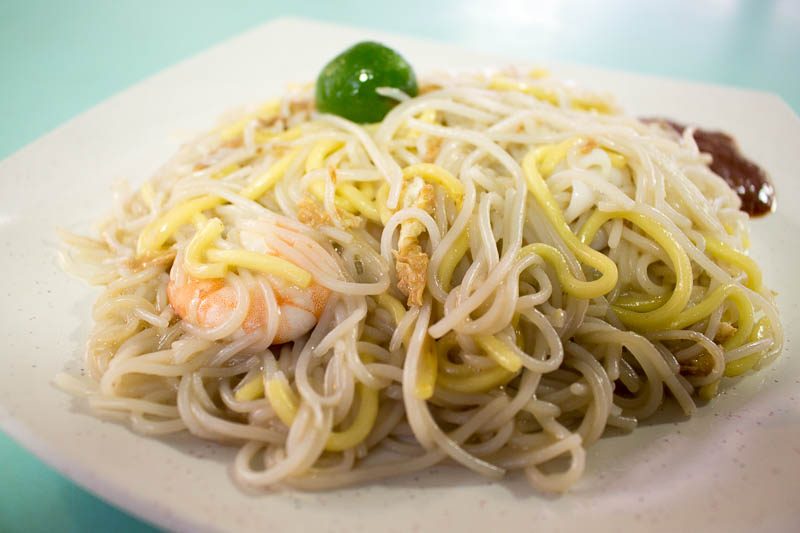
I spoke to him for just a minute before he had to get back to work as more orders flowed in. Changi Village Fried Hokkien Mee has four outlets across Singapore but this uncle only works for this stall. He disclosed that all ingredients come from the same central kitchen and the only difference is the person frying.
The uncle shared with me that he has been in this industry for many years. I guess his wealth of experience is reflected in the humble plate of goodness. I appreciated that every plate is made upon order. Some stalls prepare them by batches, which is a turn off in my opinion. You either have to wait really long for your plate or be served one that has been left out for a while.
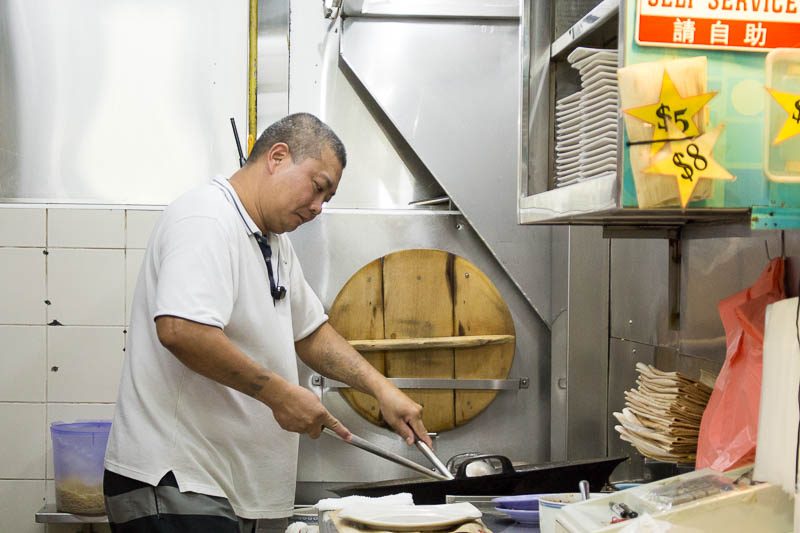
The uncle grabbed a generous amount of yellow noodles and bee hoon into the wok, then expertly tossed them around vigorously, adding splashes of broth periodically. He also covered the wok with a wooden lid for the noodles to absorb the rich flavour, before adding the rest of the ingredients.
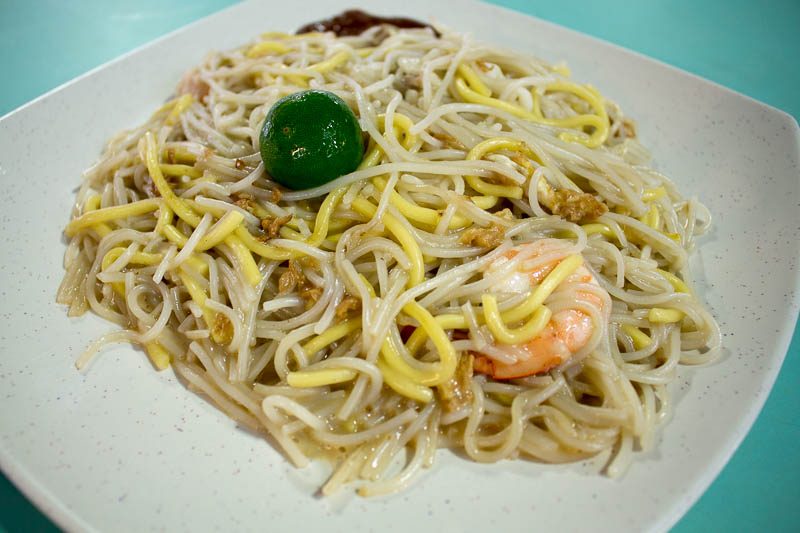
When I received my plate of noodles, the familiar fragrance wafted into my nose and I was excited to dive right into it. I ordered the S$5 portion, which was just nice for me. There are three sizes offered. Small eaters can opt for S$4, and larger eaters can opt for S$8.
One great thing about this place is that if you order the S$5 or S$8 as takeaway, they wrap it up in opeh leaf. This light yellow fibrous sheet exudes a subtle woody fragrance that enhances the entire flavour of the dish.
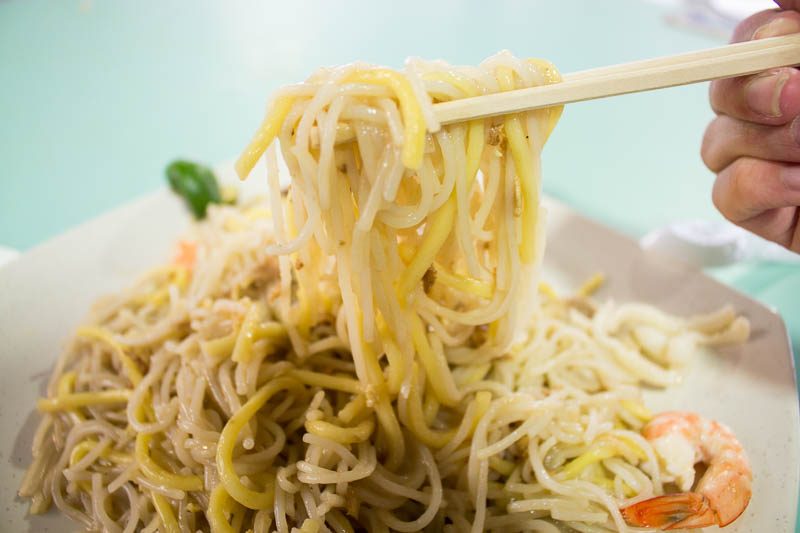
This plate of noodles leaned towards the slightly wetter side, which I prefer. The noodles are perfectly cooked and silky smooth with a nice bite. Every mouthful was full-flavoured as they had been soaked in the broth, with a distinct wok hei woven between the strands. The chunks of fried egg also add greater fragrance to the dish.
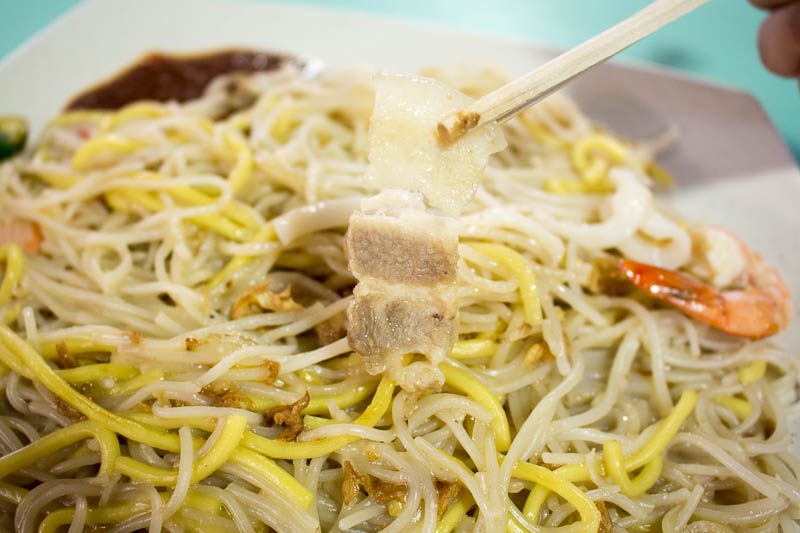
I liked that there were slices of pork belly studded throughout the noodles. Many Hokkien mee versions do not have this addition these days due to the additional work in preparation. The generous portions of pork belly bits helped to bring out the flavour of the Hokkien mee. The meaty parts also gave a varying texture with a savoury touch.

The sotong pieces were also cooked just right; slightly sweet with a nice chewy texture.

My only gripe of this dish is the prawns. There were four decently-sized prawns in the mix that were firm but slightly mediocre in taste. I would have preferred it if they were fresher.
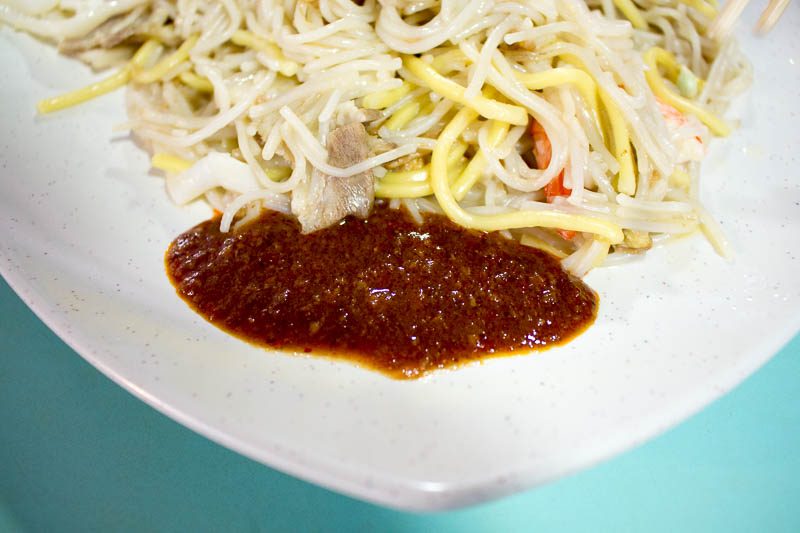
Don’t discount the sambal as it enhances the flavour profile of the dish. It’s savoury with only a tad bit spicy and some hint of sweetness. Squeeze in the lime to add a tinge of tanginess, to cut through the heaviness of the dish.
I slurped up the entire plate in no time at all. A well-balanced plate of Hokkien mee in both aroma and flavour, it was tasty and satisfying. The predominantly crustacean-filled and savoury broth and immense wok hei elevated the flavour of the dish. This is one of the best ones around that left me wanting to come back for more.
Expected damage: S$4 – S$8 per pax
The post Changi Village Fried Hokkien Mee: Fragrant Noodles With Distinct Wok Hei Wrapped In Opeh Leaf At Toa Payoh appeared first on SETHLUI.com.